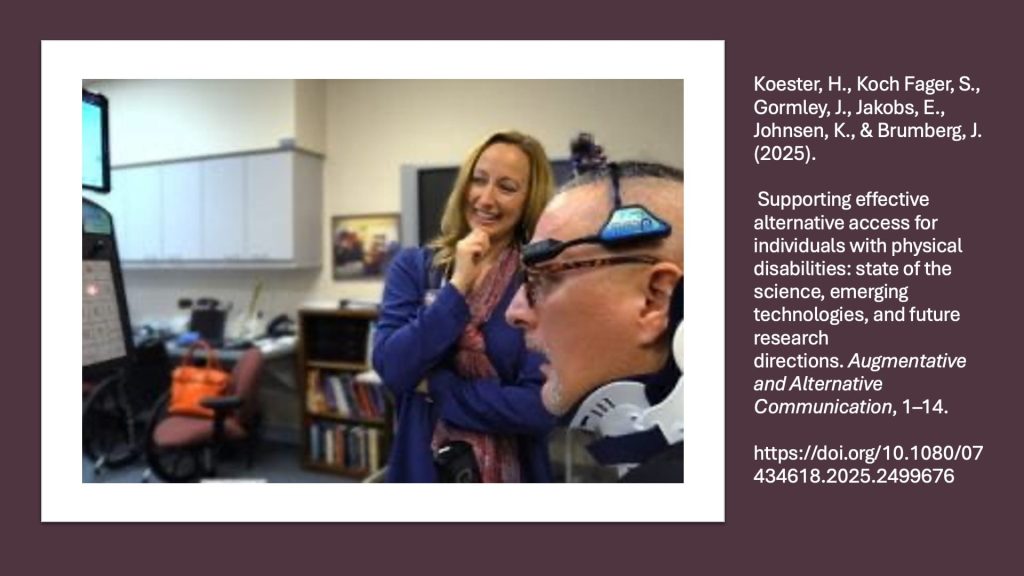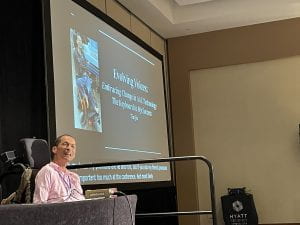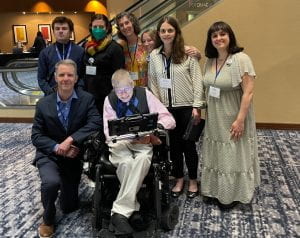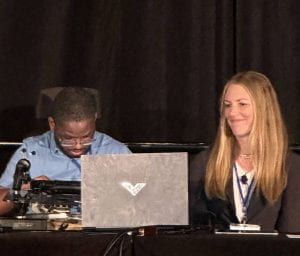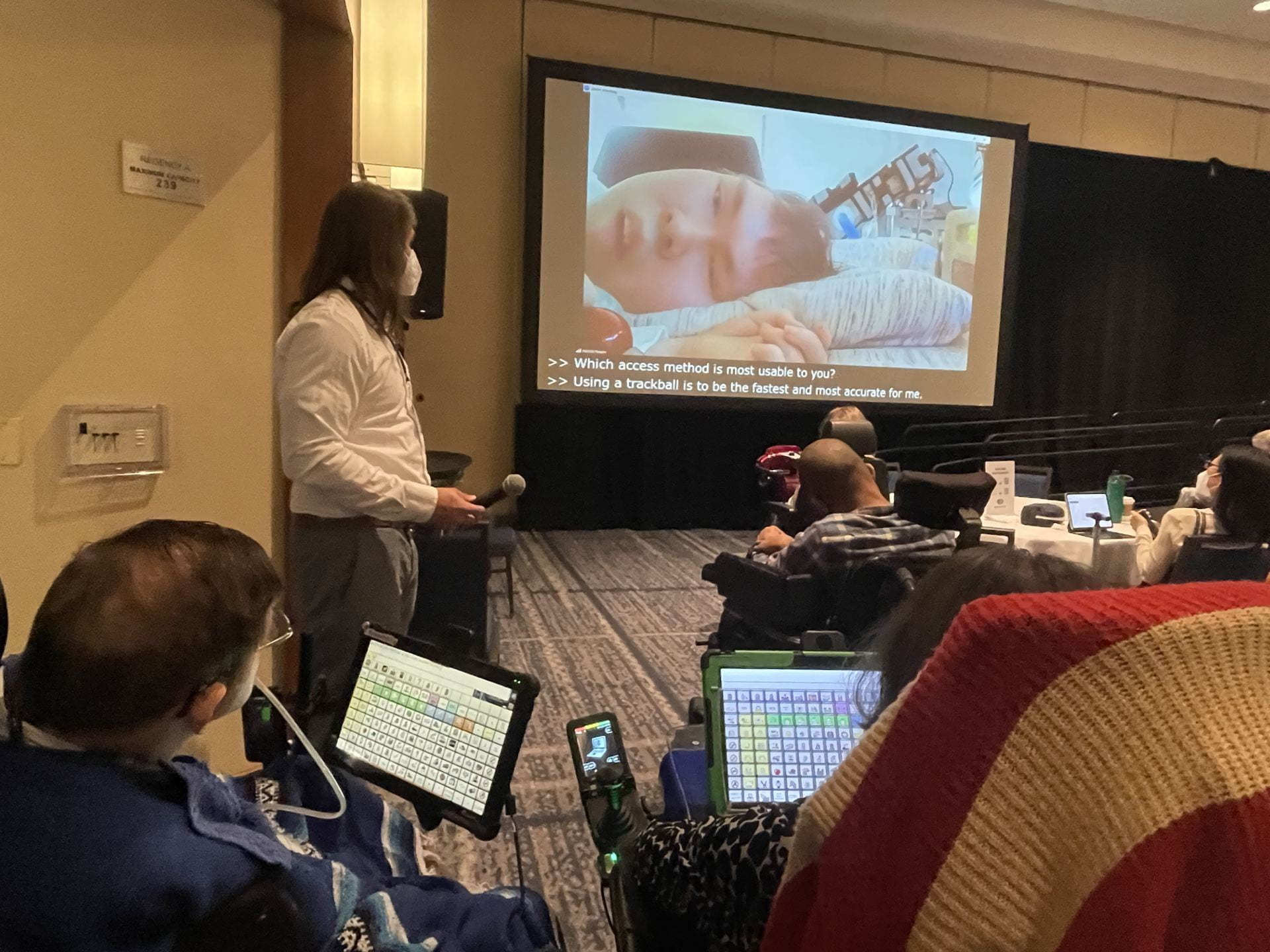
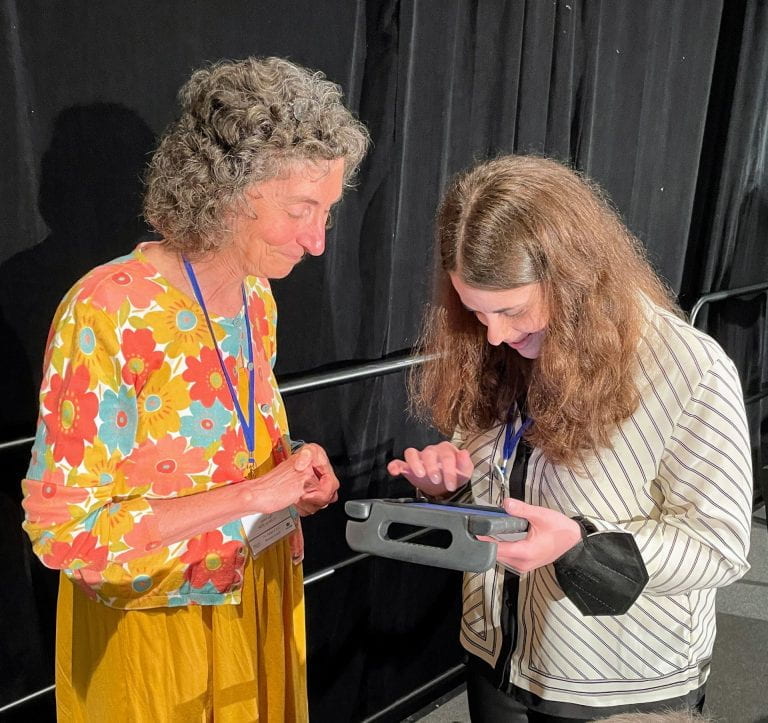
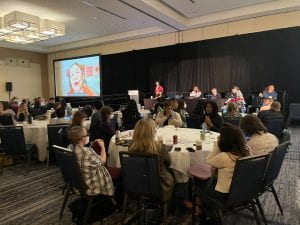
On May 13-14, 2024 the RERC on AAC and CommunicationFIRST co-hosted the Future of AAC Research Summit in Arlington, Virginia. The Future of AAC Research Summit was historic as it was the first conference that was planned, organized, and realized through the equitable, shared leadership of people who use AAC, a community advocate, and university-based researchers.
Twenty-one papers from this Summit are now freely available as a special issue in the AAC journal. Webcasts for 13 of the Summit presentations are also available.
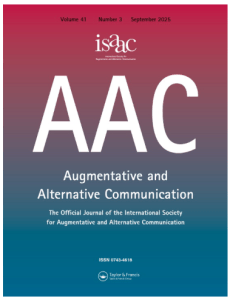
Blasko, G., Light, J., McNaughton, D., Williams, B., & Zimmerman, J. (2025). Nothing about AAC users without AAC users: a call for meaningful inclusion in research, technology development, and professional training. Augmentative and Alternative Communication, 41(3), 184–194. https://doi.org/10.1080/07434618.2025.2514748
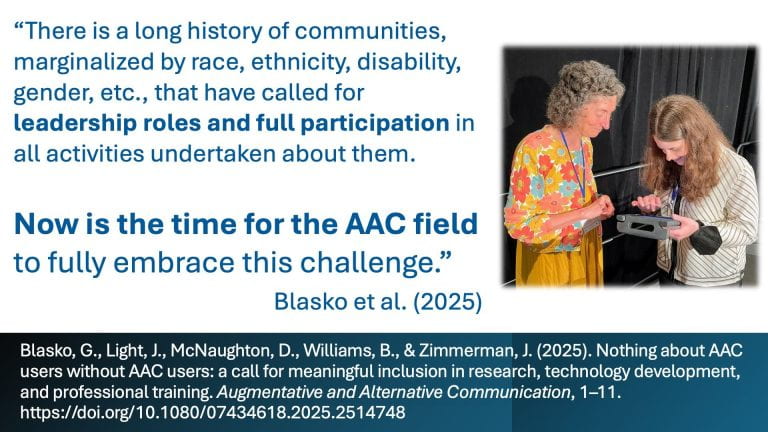
Forber-Pratt, A. J. (2025). A personal commentary about disability inclusion, and representation in research. Augmentative and Alternative Communication, 41(3), 195–199. https://doi.org/10.1080/07434618.2025.2499685
Video available at https://tinyurl.com/AAC-Forber-Pratt-2024
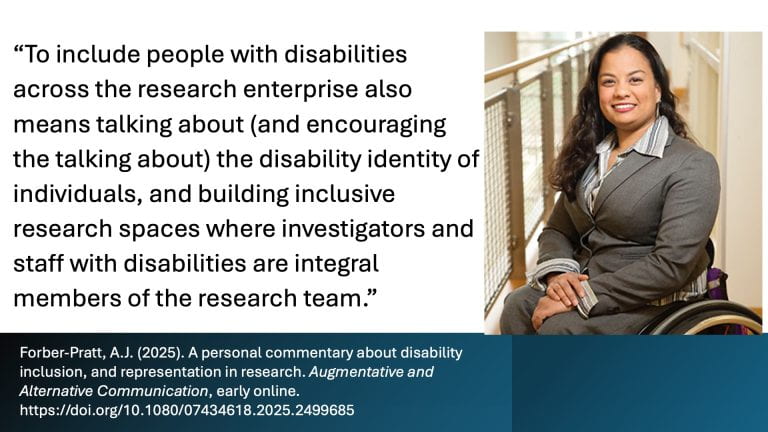
McLeod, L. (2025). How Ableism impacts people who use AAC. Augmentative and Alternative Communication, 41(3), 200–202. https://doi.org/10.1080/07434618.2025.2489662
Video of presentation available at https://tinyurl.com/AAC-McLeod-2024
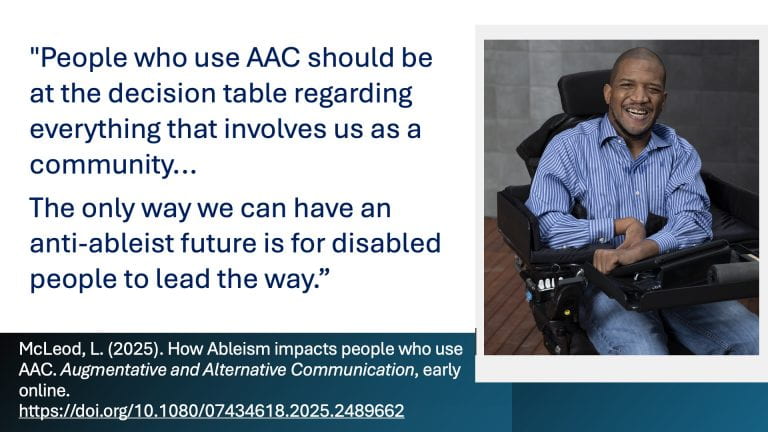
Wong, A. (2025). How ableism impacts people who need and use AAC. Augmentative and Alternative Communication, 41(3), 203–206. https://doi.org/10.1080/07434618.2025.2489663
Video of presentation available at https://tinyurl.com/AAC-Wong-2024
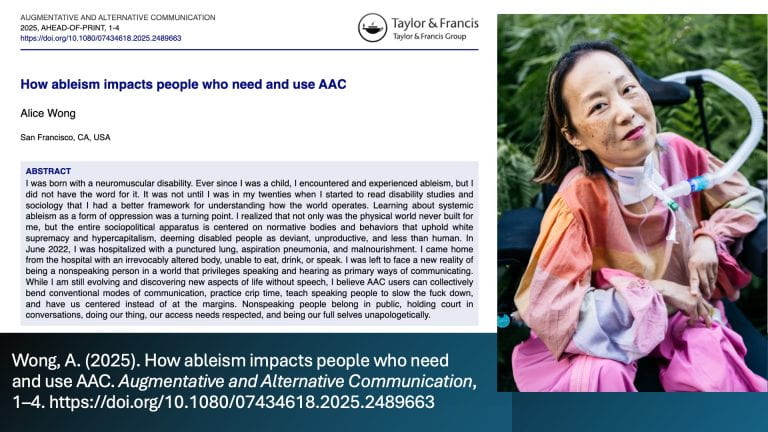
Williams, B. (2025). AAC and technology: what’s communication equity got to do with it? Augmentative and Alternative Communication, 41(3), 207–210. https://doi.org/10.1080/07434618.2025.2504495
Video of presentation available at https://tinyurl.com/AAC-Williams-equity-2024
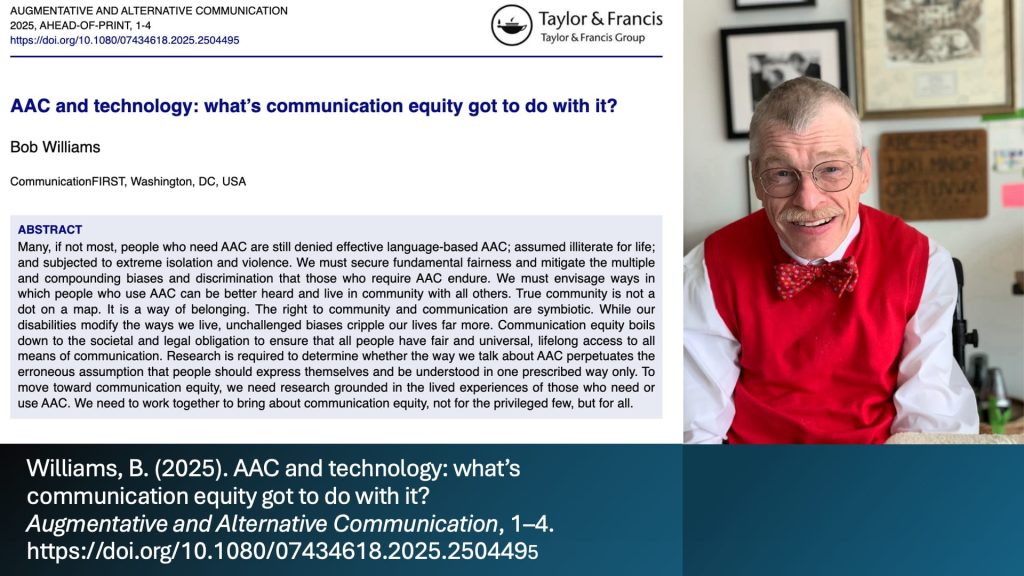
Williams, K., & Holyfield, C. (2025). Future of AAC technologies: priorities for inclusive innovation. Augmentative and Alternative Communication, 41(3), 211–214. https://doi.org/10.1080/07434618.2025.2513906
Video of presentation available at https://tinyurl.com/AAC-Williams-future-2024
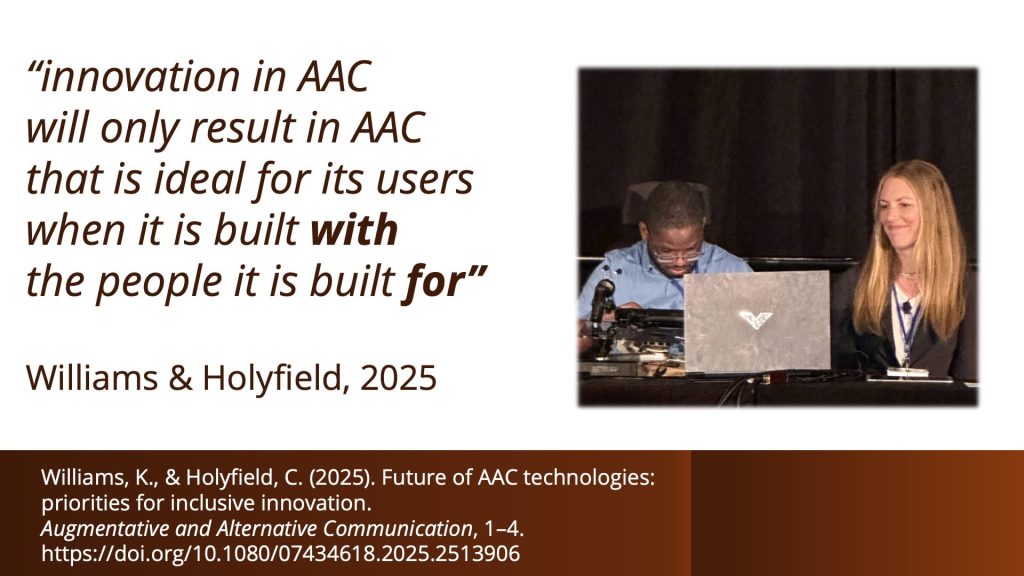
Blasko, G. (2025). Unveiling underlying systemic isolation challenges for AAC users. Augmentative and Alternative Communication, 41(3), 215–222. https://doi.org/10.1080/07434618.2025.2515279
Video of presentation available at https://tinyurl.com/AAC-Blasko-2024
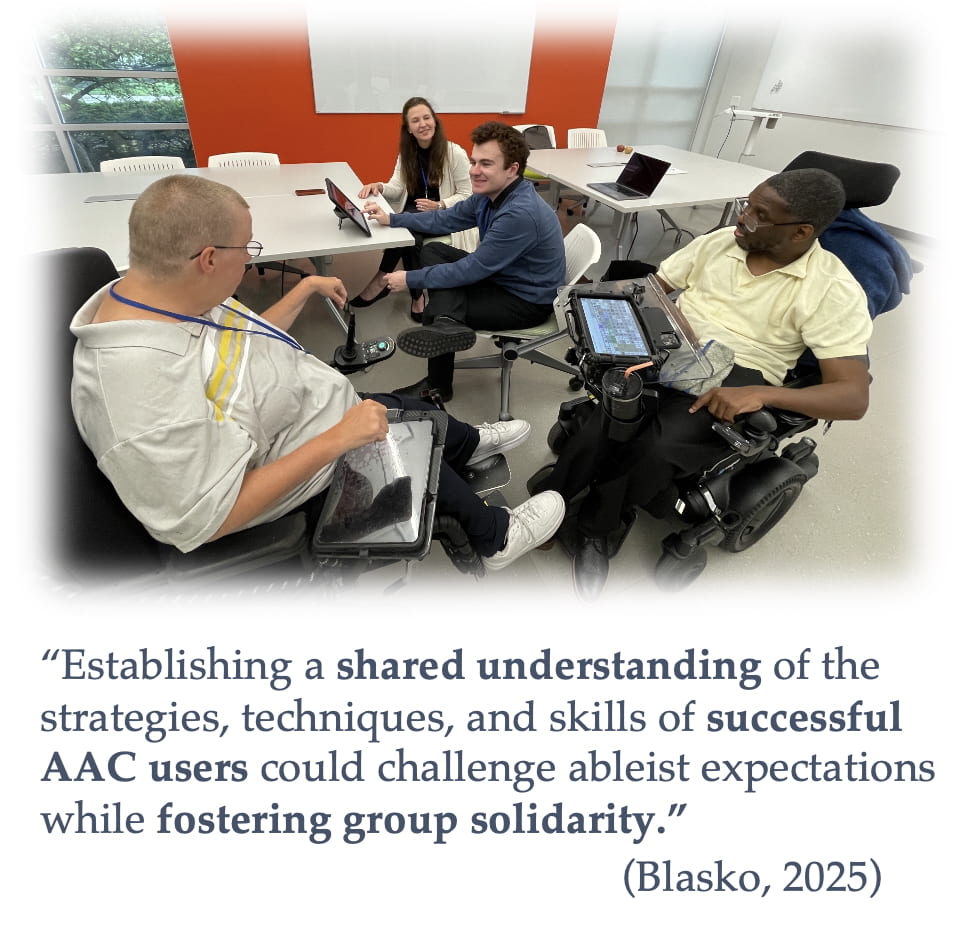
Crisp-Cooper, M. (2025). Crossing the communication chasm. Augmentative and Alternative Communication, 41(3), 223–225. https://doi.org/10.1080/07434618.2025.2499681
Video of presentation available at https://tinyurl.com/AAC-Crisp-Cooper-2024
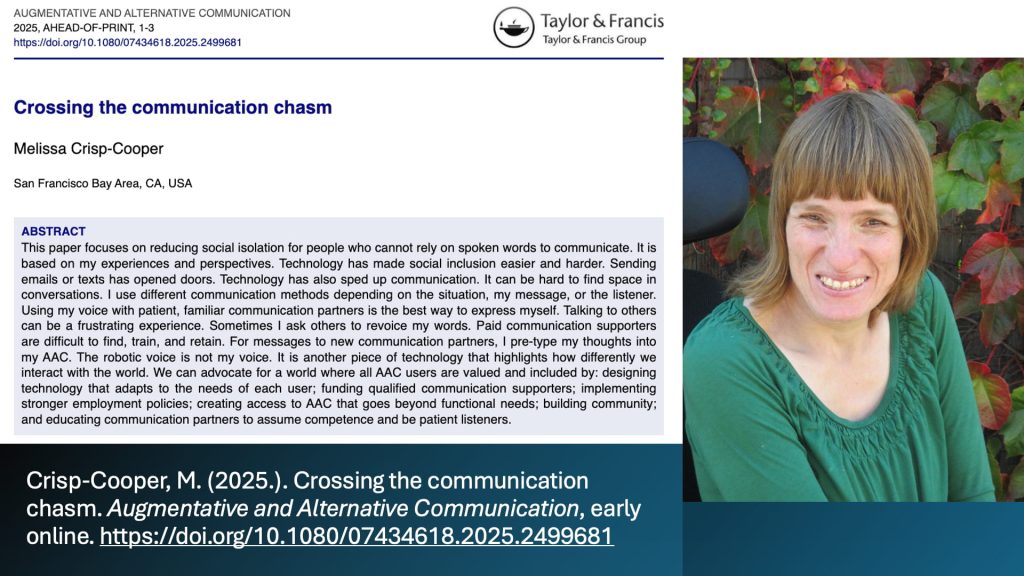
Koloni, R. (2025). To include us in our own worlds: AAC is not optional. Augmentative and Alternative Communication, 41(3), 226–229. https://doi.org/10.1080/07434618.2025.2515283
Video of presentation available at https://tinyurl.com/AAC-Koloni-2024
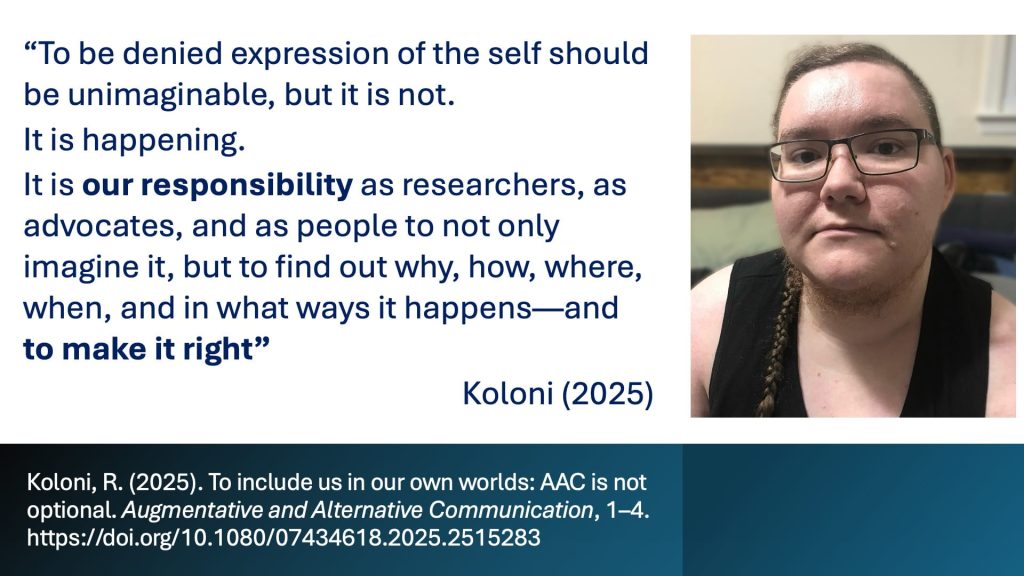
Light, J., Fager, S. K., Gormley, J., Hyatt, G. W., & Jakobs, E. (2025). Dismantling societal barriers that limit people who need or use AAC: lived experiences, key research findings, and future directions. Augmentative and Alternative Communication, 41(3), 230–244. https://doi.org/10.1080/07434618.2025.2508490
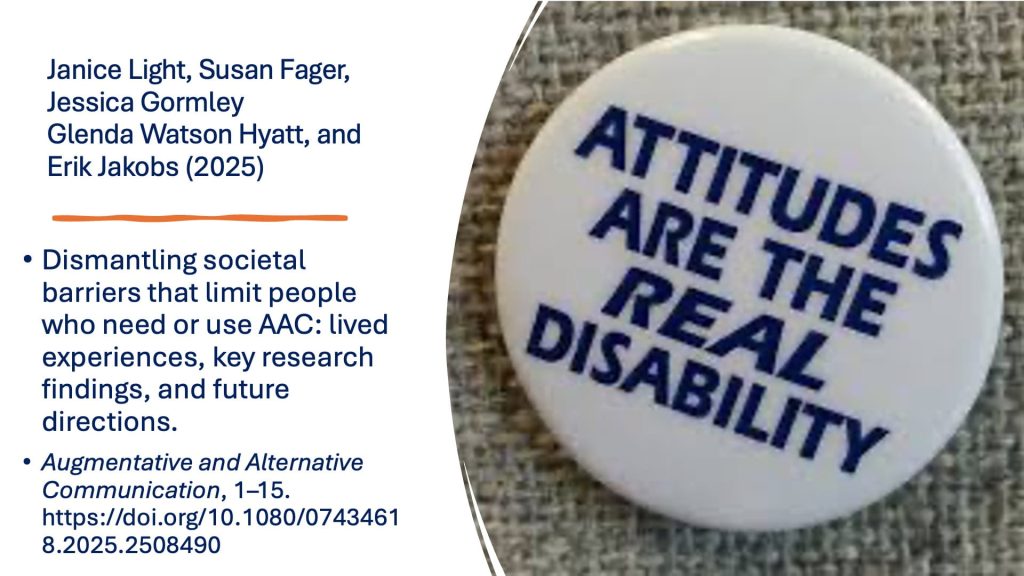
corbin, endever*. (2025). Speech is exhausting. Augmentative and Alternative Communication, 41(3), 245–247. https://doi.org/10.1080/07434618.2025.2513907
Video of presentation available at https://tinyurl.com/AAC-speech-2024
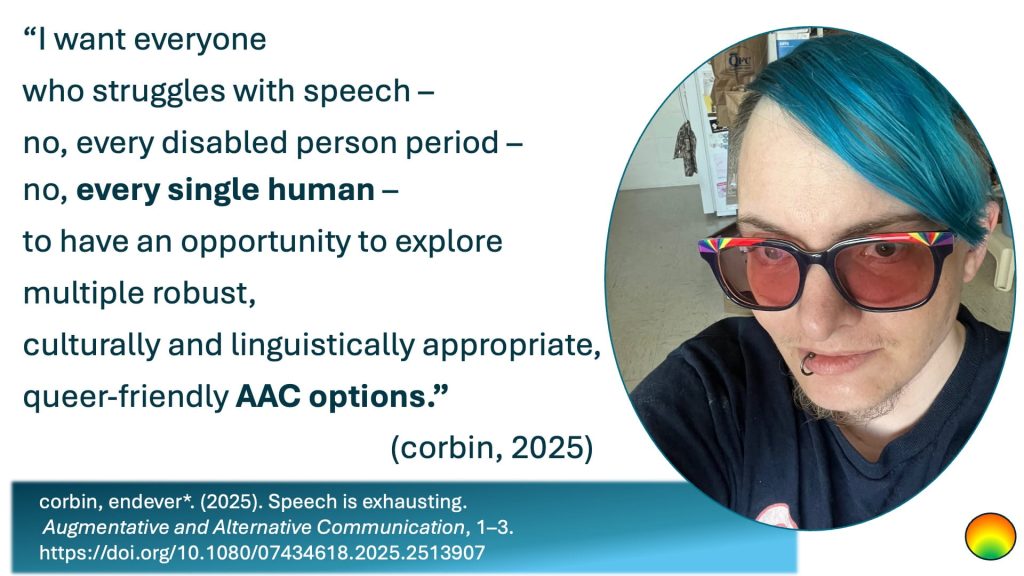
Nazareth, G. (2025). Speaking from the heart: a story about innovation, resilience, and infinite possibilities with AAC. Augmentative and Alternative Communication, 41(3), 248–249. https://doi.org/10.1080/07434618.2025.2508491
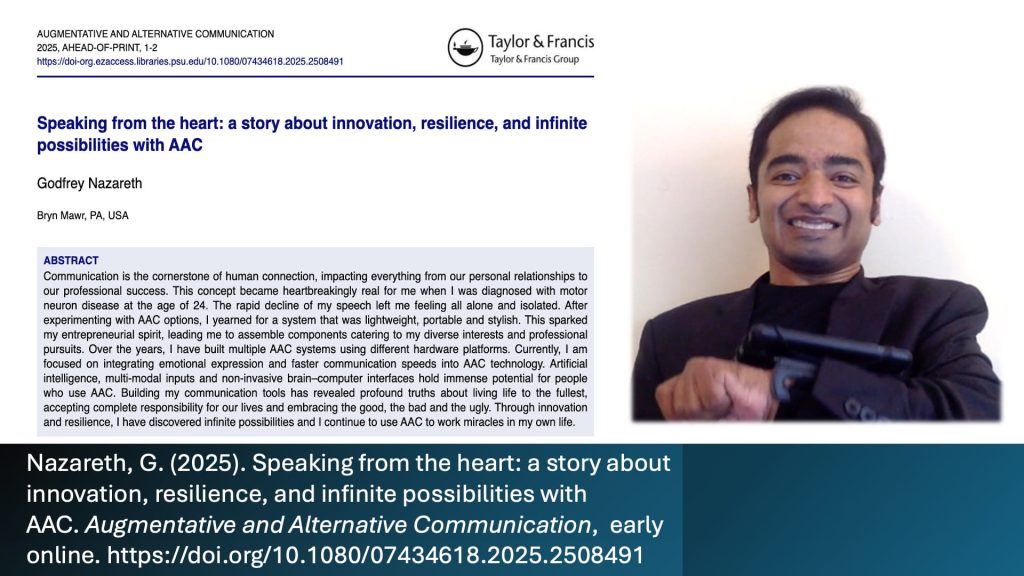
McNaughton, D., Rackensperger, T., & McLemore, L. (2025). Supporting meaningful participation in society by adults with developmental disabilities who need and use AAC: lived experiences, key research findings, and future directions. Augmentative and Alternative Communication, 41(3), 250–263. https://doi.org/10.1080/07434618.2025.2504497
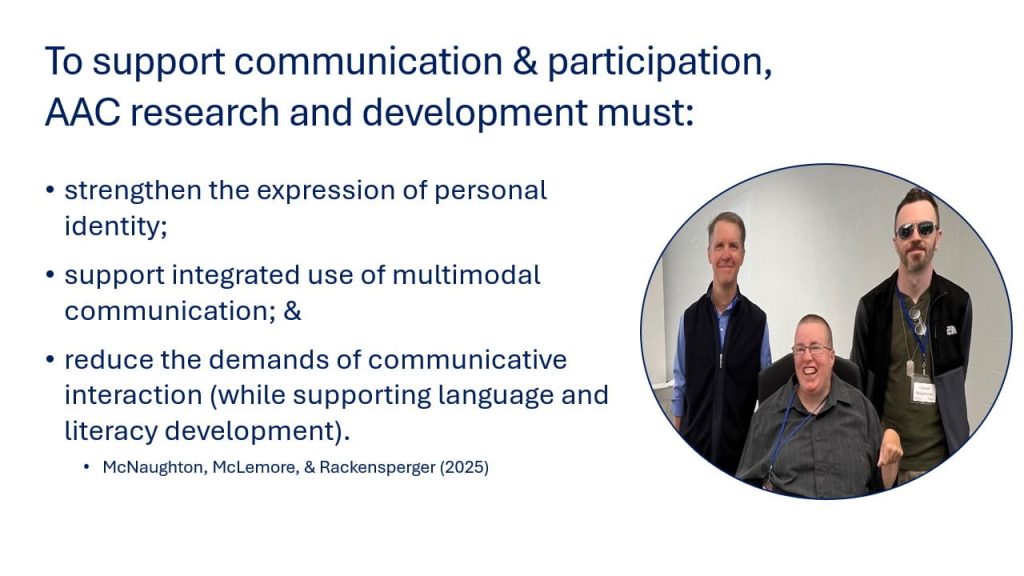
Zimmerman, J. (2025). Beyond access: the intersecting role of AAC, literacy, and technology. Augmentative and Alternative Communication, 41(3), 264–266. https://doi.org/10.1080/07434618.2025.2504499
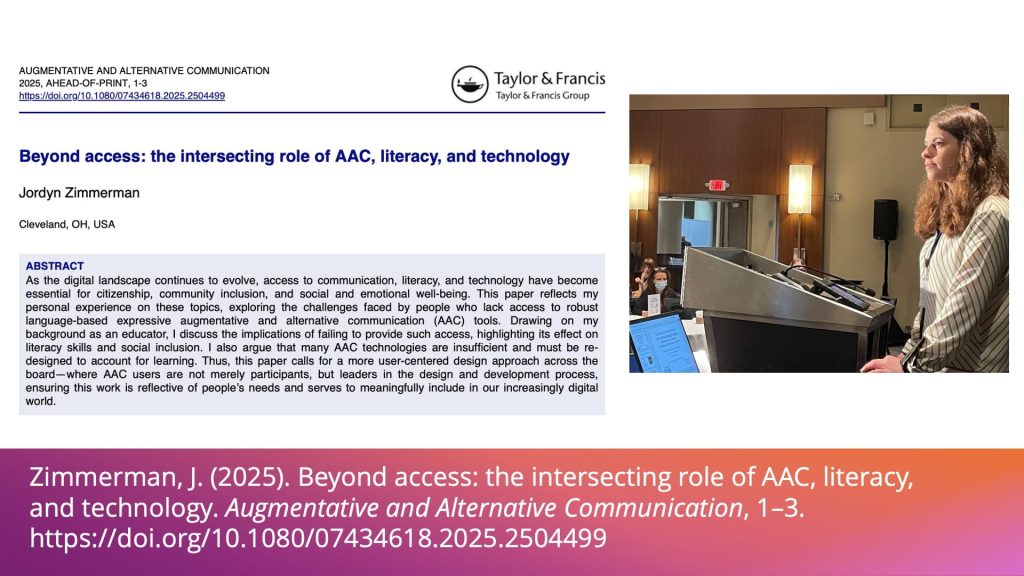
Holyfield, C., Light, J., Nieder, D., & Preece, J. (2025). External challenges for individuals who need or use AAC who are learning language: lived experiences, key research findings, and future directions. Augmentative and Alternative Communication, 41(3), 267–279. https://doi.org/10.1080/07434618.2025.2508485
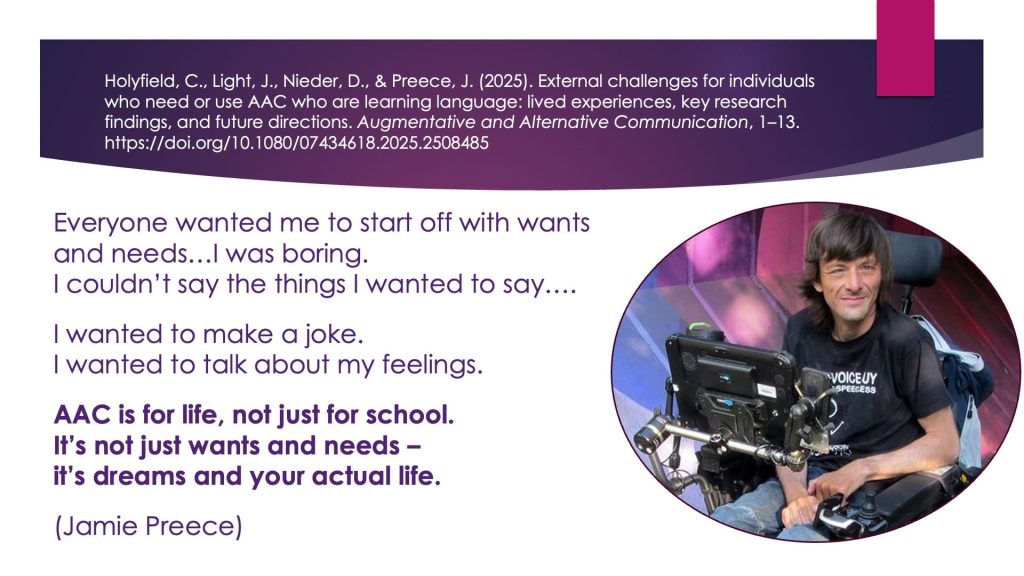
Williams, B. (2025). Reading, writing, and AAC are fundamental. Augmentative and Alternative Communication, 41(3), 280–282. https://doi.org/10.1080/07434618.2025.2508492
Video of presentation available at https://tinyurl.com/AAC-Williams-literacy-2024
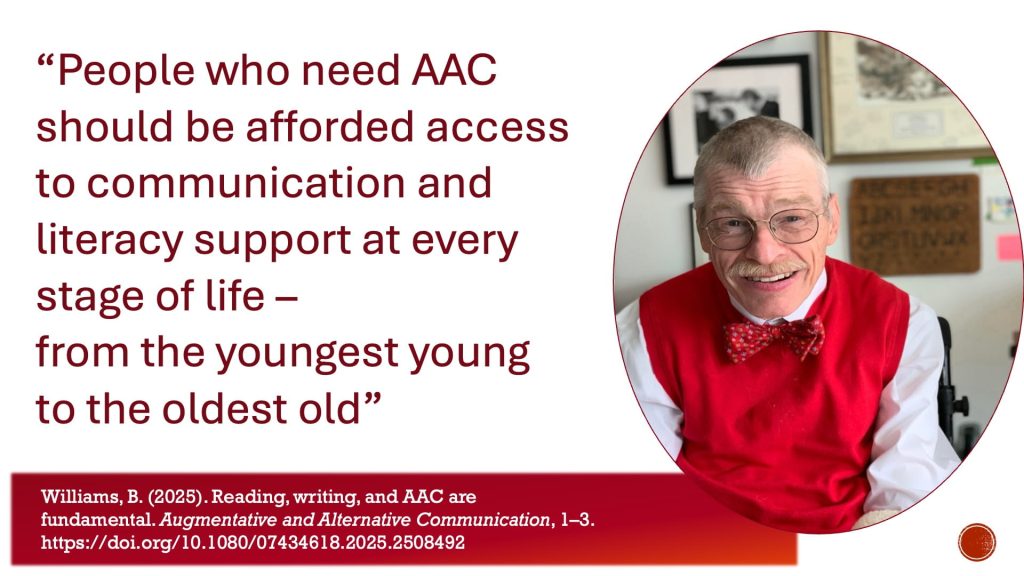
Light, J., Holyfield, C., McNaughton, D., Nieder, D., & Preece, J. (2025). Overcoming barriers to literacy for individuals who need or use AAC: lived experiences, key research findings, and future directions. Augmentative and Alternative Communication, 41(3), 283–294. https://doi.org/10.1080/07434618.2025.2502032
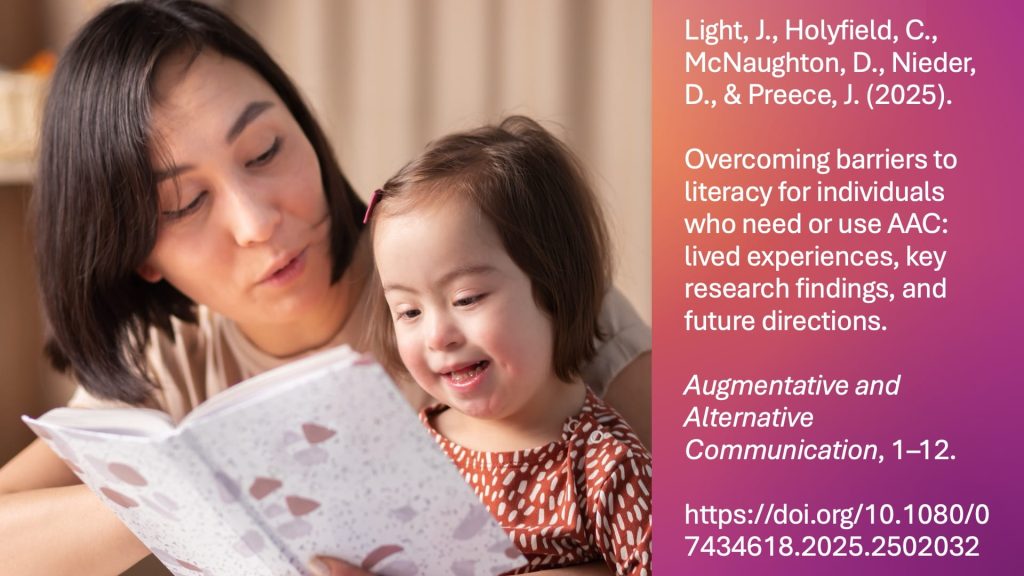
Jin, T. (2025). Embracing change in AAC technology: the keyboard to my success. Augmentative and Alternative Communication, 41(3), 295–296. https://doi.org/10.1080/07434618.2025.2508484
Video of presentation available at https://tinyurl.com/AAC-Jin-2024
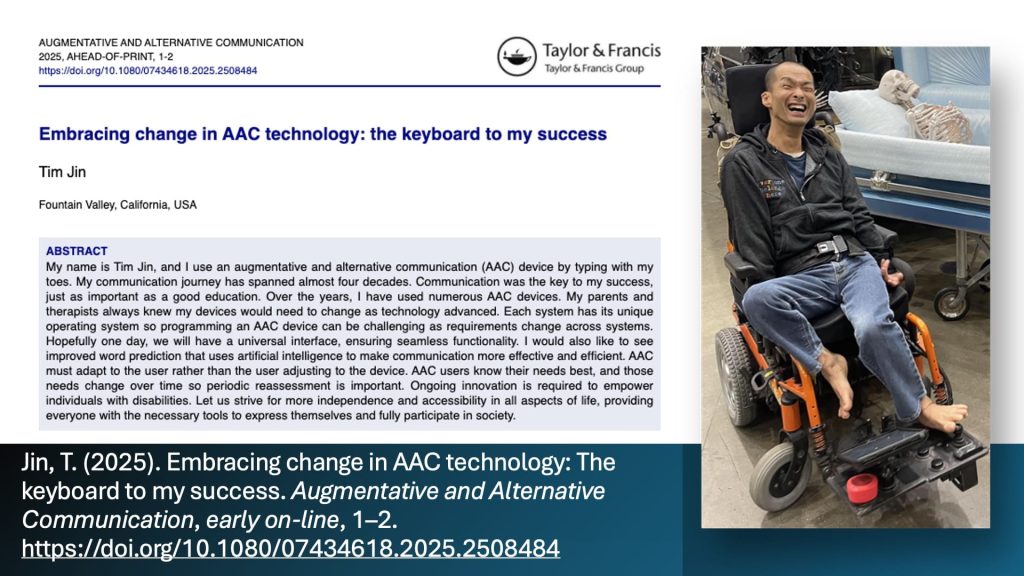
Ramirez, P. (2025). Alternative ways to access AAC technologies. Augmentative and Alternative Communication, 41(3), 297–299. https://doi.org/10.1080/07434618.2025.2513902
Video of presentation available at https://tinyurl.com/AAC-Ramirez-2024
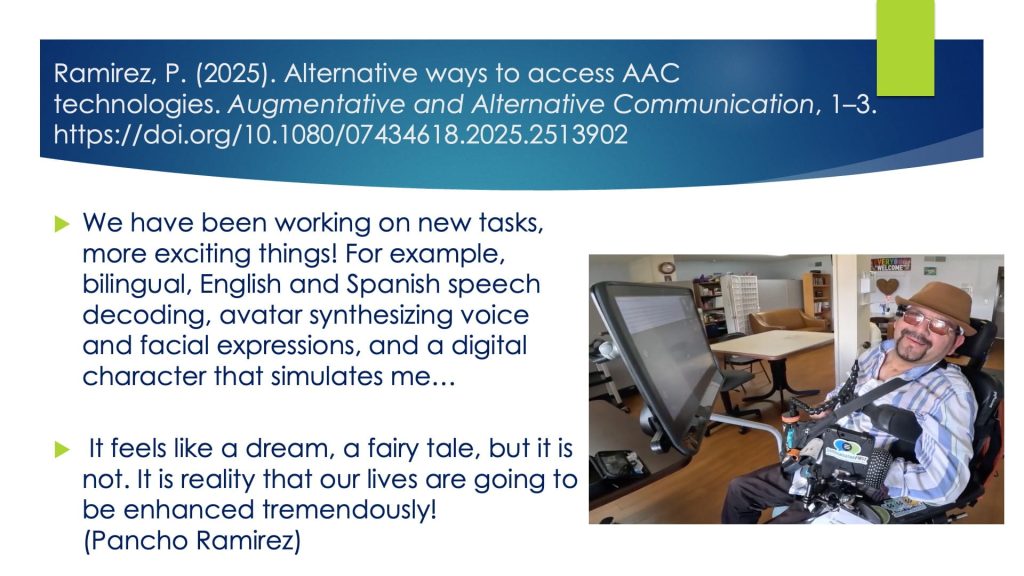
Regan, P. (2025). The first word in accessibility is “access.” Augmentative and Alternative Communication, 41(3), 300–303. https://doi.org/10.1080/07434618.2025.2513912
Video of presentation available at https://tinyurl.com/AAC-Regan-2024
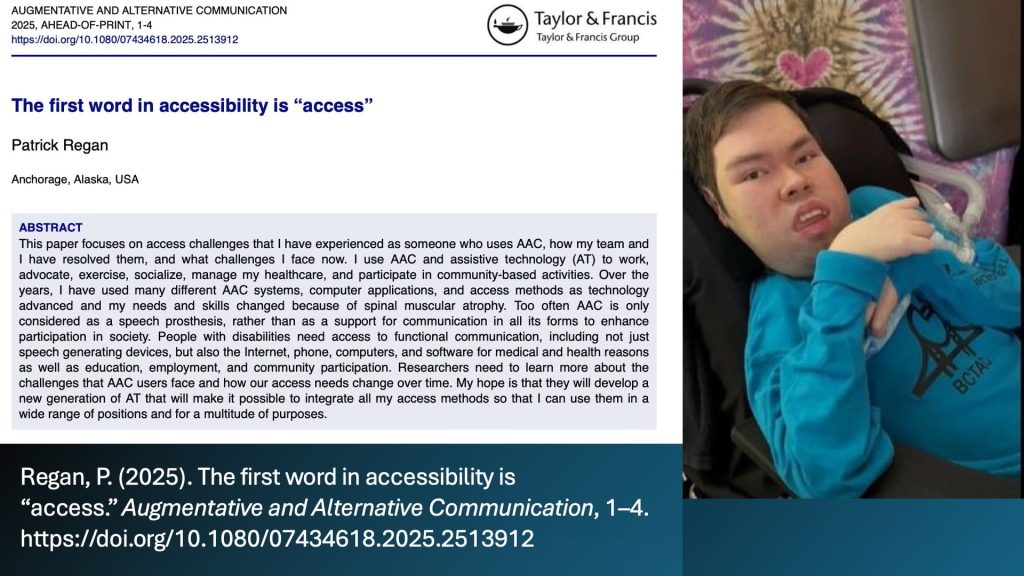
Koester, H., Koch Fager, S., Gormley, J., Jakobs, E., Johnsen, K., & Brumberg, J. (2025). Supporting effective alternative access for individuals with physical disabilities: state of the science, emerging technologies, and future research directions. Augmentative and Alternative Communication, 41(3), 304–317. https://doi.org/10.1080/07434618.2025.2499676
